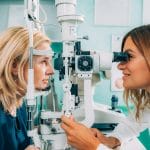An estimated one in four adults in the U.S. lives with a disability—and studies show that people with disabilities receive poorer quality of care and experience worse outcomes than people without them. Collecting data on disability status is the first step to understanding the extent of health disparities faced by individuals with disabilities, and developing targeted interventions to drive improvement.
The National Committee for Quality Assurance (NCQA) recently completed an environmental scan to understand how disability is defined, identify barriers that limit access to high-quality care for people with disabilities, examine collection of data on disability and determine existing quality measurement frameworks focused on people with disabilities.
Building on the foundational work of the disability advocacy and research communities, NCQA’s research found that variation in collecting disability data highlights the need for process improvement for consistency and standardization.
How to Define Disability
The definition of “disability” is constantly evolving. Many health care providers were trained according to the medical model, which views disability as an impairment, but this model can be limiting and undercount people with disabilities. Other models, such as the social model, seekto understand disability in the context of societal challenges or barriers that limit a person’s ability to participate in their life and in the community. The biopsychosocial model takes a more holistic view of the effects of biological, psychological, social and cultural interactions on a person’s experience of disability.
The definition is often based on the needs of the organization collecting the data, focusing on functional impairment, relying on third-party assignation of disability status—and potentially leading to underestimation of people with disabilities. Although there are standardized assessments, such as the American Community Survey (ACS) 6 Questions and the Washington Group Short Set on Functioning (WG-SS), they are not consistently used, and many organizations rely on homegrown methods to collect the data.
NCQA believes that self-reported data is the gold standard for collection of disability status. Organizations should allow a person—not a functional limitation or diagnosis code—to define their disability status.
Barriers to Care for People With Disabilities
People with disabilities face many barriers to accessing high-quality health care services. Study findings are summarized below:
- Ableism, stigma, discrimination. Stigma and discrimination are associated with depressive symptoms, poor health outcomes and decreased social function, while ableism perpetuates stigma in care settings and a lack of representation of people with disabilities in the medical profession.
- Intersectional inequities.Individuals with intersecting identities are more likely to have worse health outcomes and decreased engagement in care.
- Clinician bias. Clinicians may have bias—implicit and explicit—against people with disabilities, lack proper training, cling to medicalized views of disability and use outdated language when dealing with patients with disabilities.
- Accessibility.People with disabilities are faced with a lack of accessible medical diagnostic equipment, challenges with transportation to medical appointments and inconsistent provision of communication accommodations, such as interpreter services.
To better understand disparities in care and target efforts to improve care for people with disabilities, organizations that collect data on disability status can begin to stratify their population by the type of disability.
Current Status of Disability Data Collection
In addition to the environmental scan, NCQA surveyed health care organizations about their disability status collection practices. Twenty-one organizations responded—10 health plans, 6 health systems and 5 integrated health systems that vary in membership size and represent diverse geographic regions.
- Ten organizations (48%) reported ongoing efforts to collect disability status directly from members; the remaining 11 organizations (52%) do not collect this data.
- Seven organizations (33%) note disability-related accommodation requests.
- Data most frequently collected relates to vision, speech, hearing or cognitive difficulty and physical disability.
- Less frequently collected data relates to independent living difficulty, attention-deficit disorder or attention-deficit/hyperactivity disorder, immunology related disability and traumatic brain injuries.
- Few organizations report using a standardized tool to gather data.
Disability advocacy and research communities are working to reduce these barriers, which also include uncertainty about best practices or approaches to data collection, competing internal organization priorities, lack of staffing or IT resources and lack of standardized tools.
Quality Measures Focused on People with Disabilities
There are multiple efforts to develop and report measures assessing the quality of care delivered to people with disabilities; for example:
- National Core Indicators for Intellectual and Developmental Disabilities (NCI®-IDD) surveys assess the quality and outcomes of developmental disability services, and support agencies in gathering data, comparing state performance and establishing national benchmarks.
- National Core Indicators for Aging and Disabilities (NCI-AD™) in-person surveys assess performance in programs and services for older adults and people with physical disabilities.
- Consumer Assessment of Healthcare Providers and Systems (CAHPS®) can be voluntarily administered by state Medicaid agencies to gather input from Medicaid beneficiaries about their experiences receiving long-term services and supports through home and community-based services.
- Personal Outcome Measures, a tool by the Council on Quality and Leadership developed in partnership with the National Leadership Consortium on Developmental Disabilities, seek to understand the desired outcomes of people receiving services.
Although it is vital to include individuals from the disability community in efforts to advance care, and identify care gaps and experiences, these person-centered approaches are underutilized.
Moving Forward
To standardize self-reported disability data collection, NCQA has launched a new measure for the Healthcare Effectiveness Data and Information Set (HEDIS®) measurement year 2026. Disability Description of Membership aims to improve and standardize collection of disability status and data source across health plans. Reporting this measure will allow for data stratification and eventual identification of disparities faced by people with disabilities. NCQA’s efforts align with the Research Roadmap Toward Improved Measures of Disability, which reflects the current and future state of disability measurement.
Accreditation and regulatory bodies should continue to develop standards to clarify best practices and help health care organizations improve care for people with disabilities. Some examples of potential standards include:
- Member-level data collection on disability.
- Site-level data collection on accessible medical equipment.
- Clinician and staff training.
- Processes to improve care and communication for virtual and in-person care.
With improved disability data collection, the health care industry will be better equipped to advance care and outcomes for people with disabilities.










1 thought on “Improving Care for People With Disabilities Starts With Collecting Data”
Comments are closed.